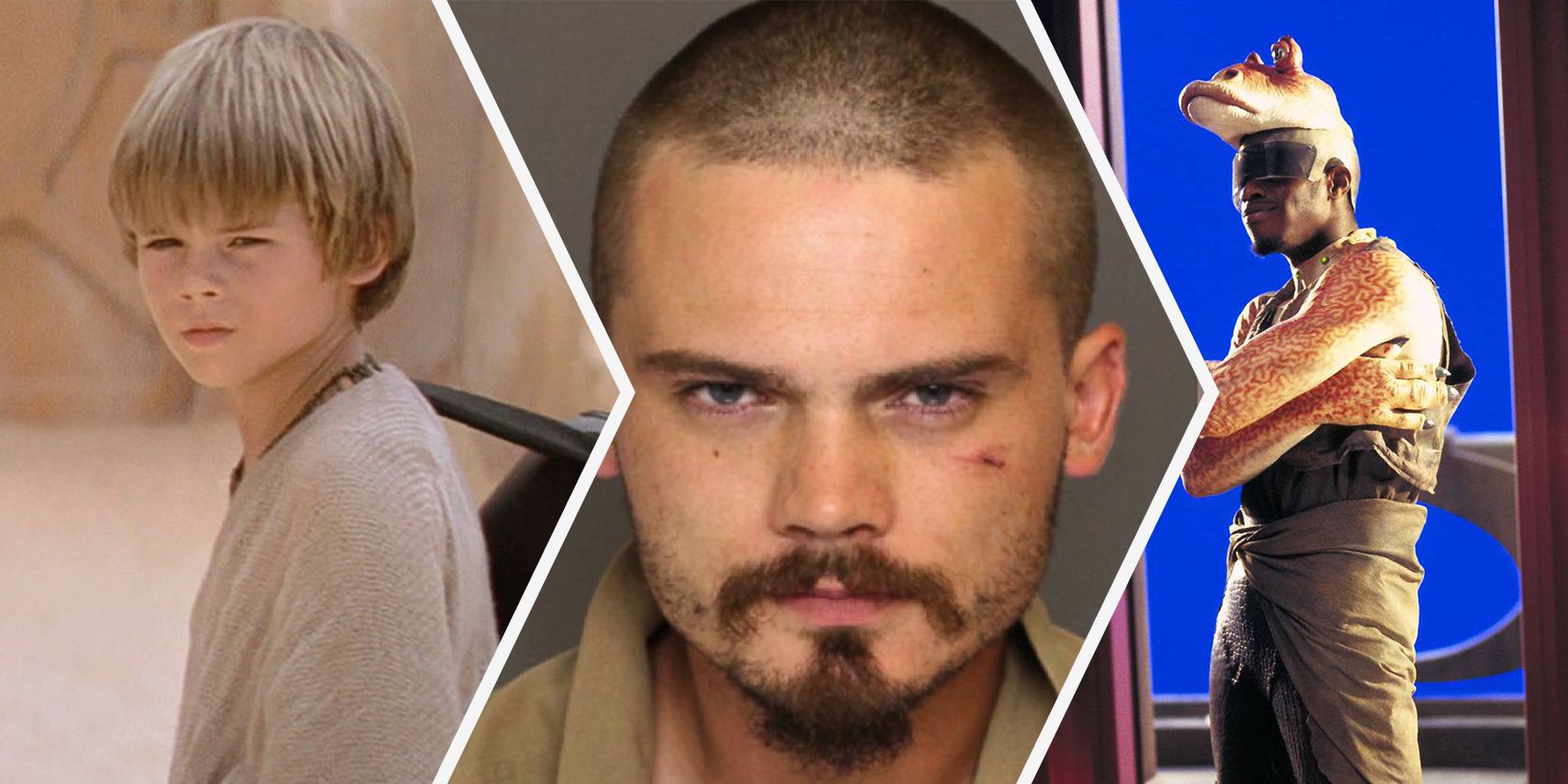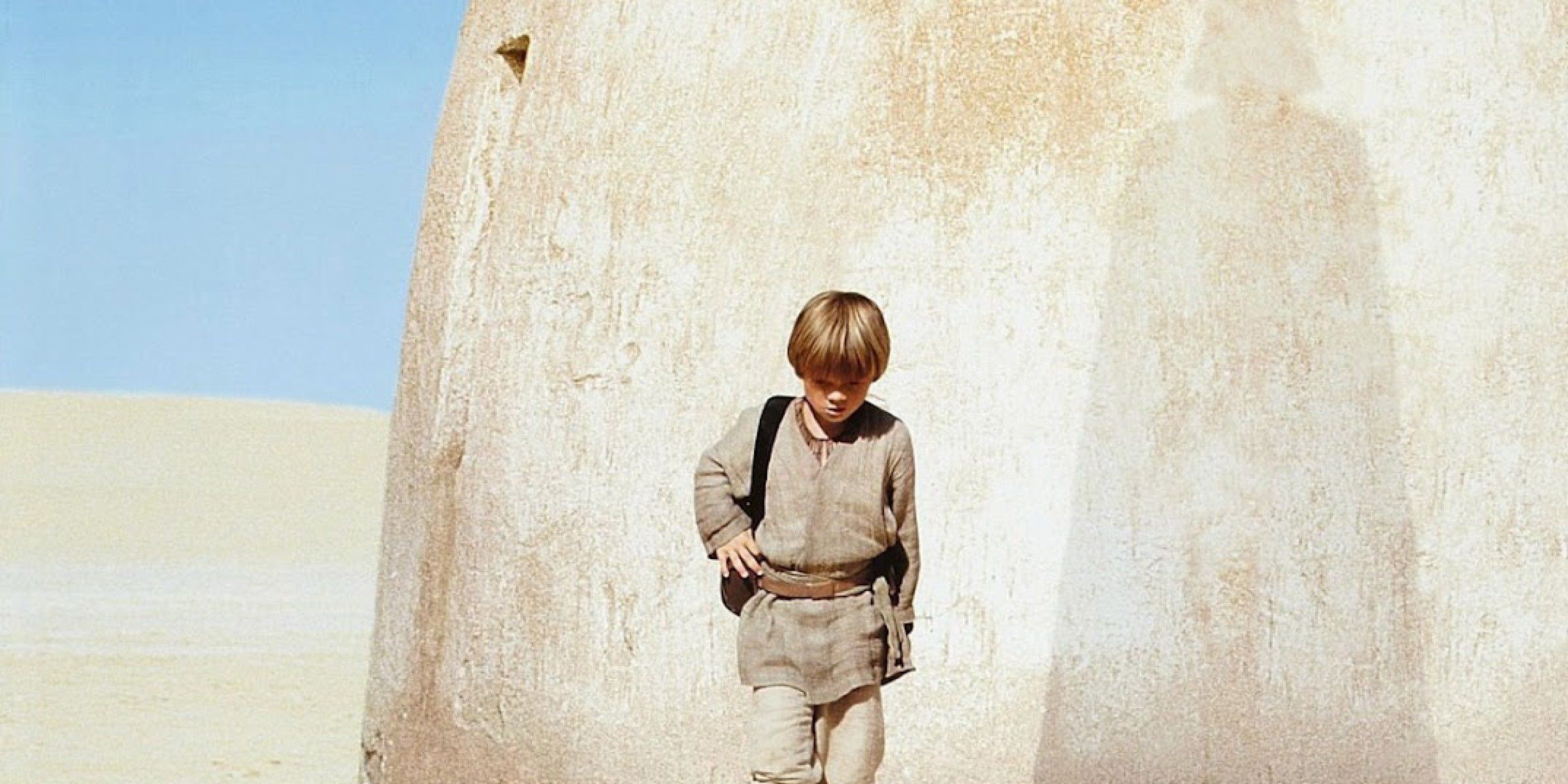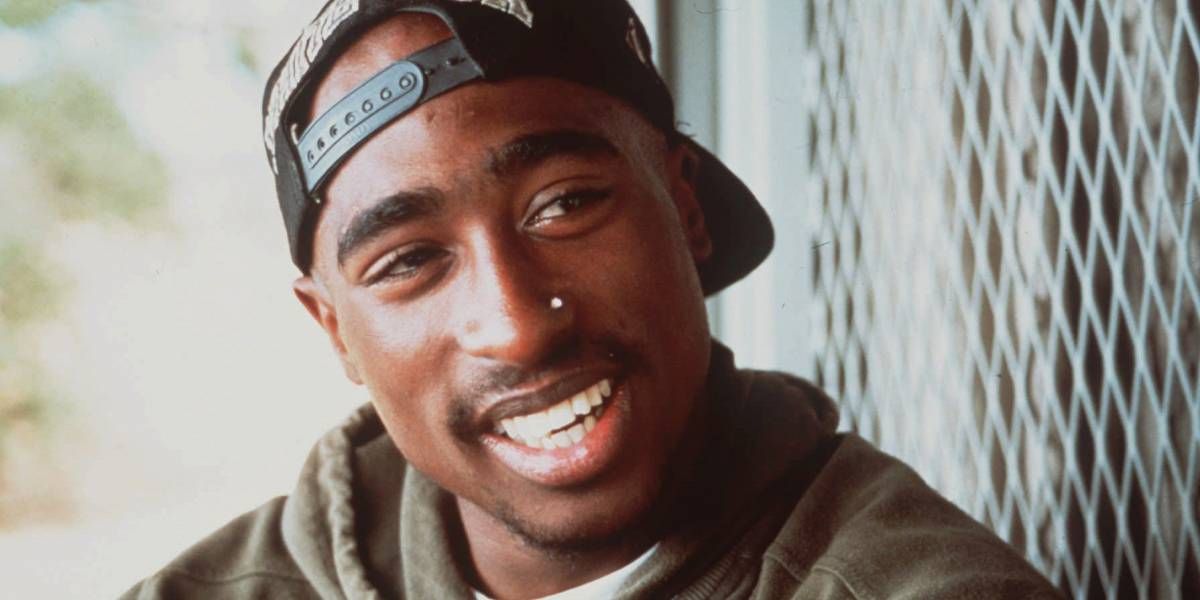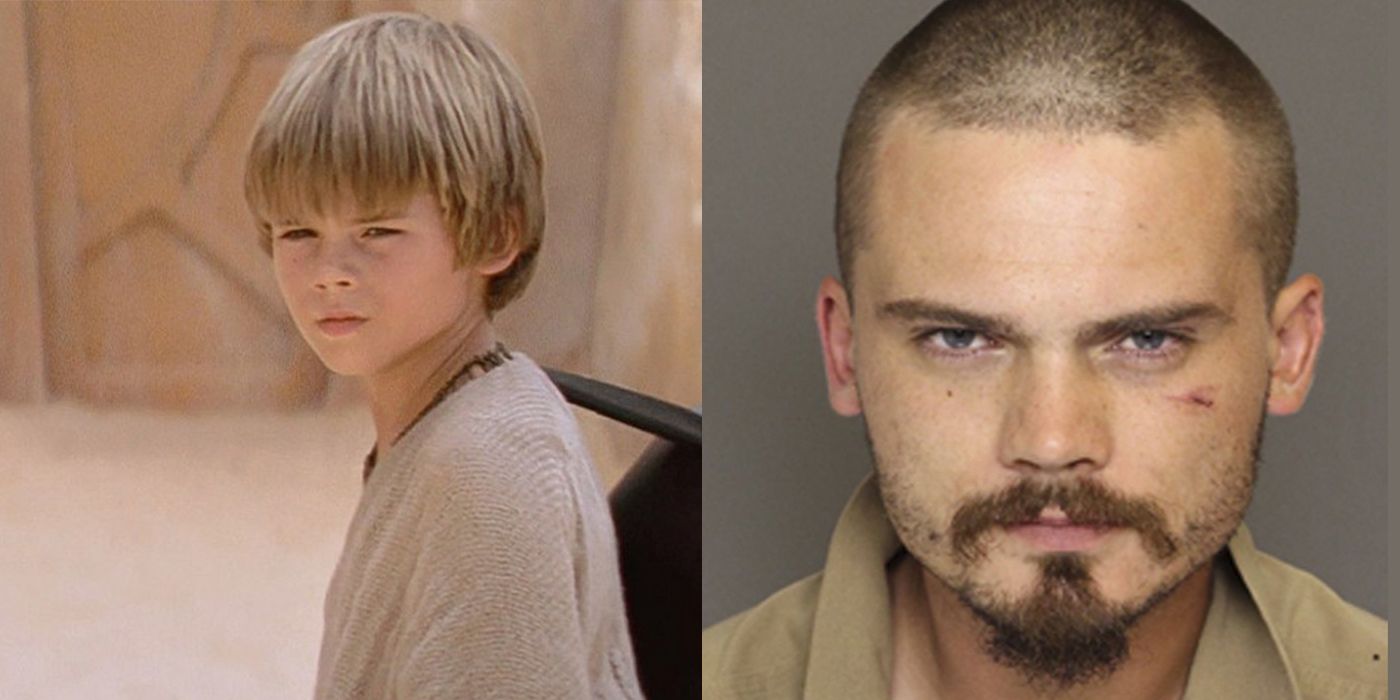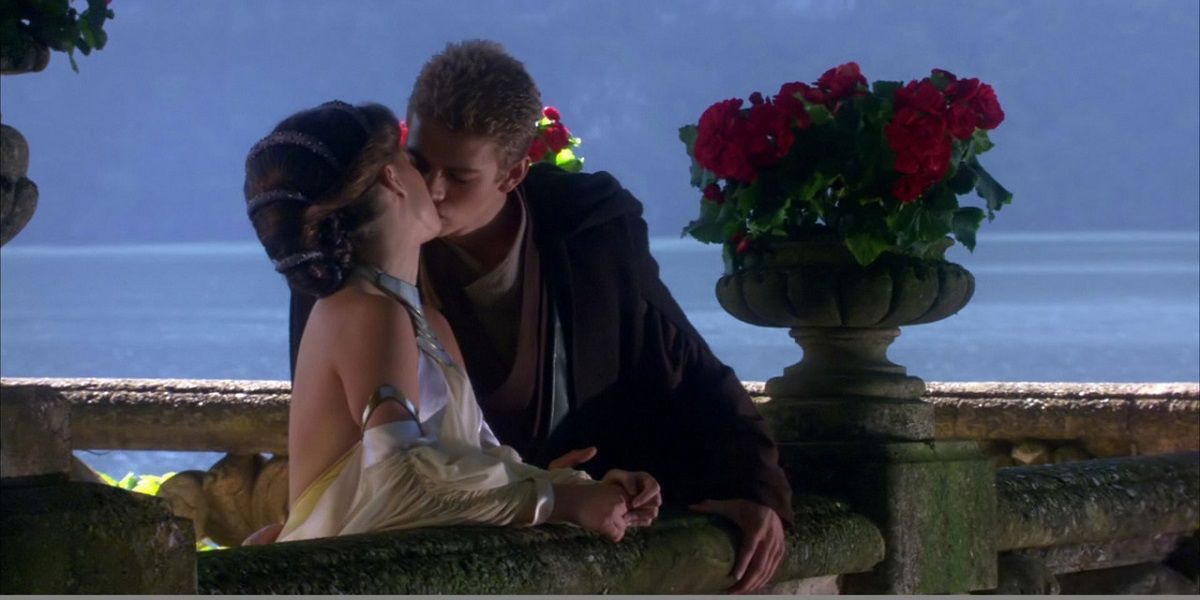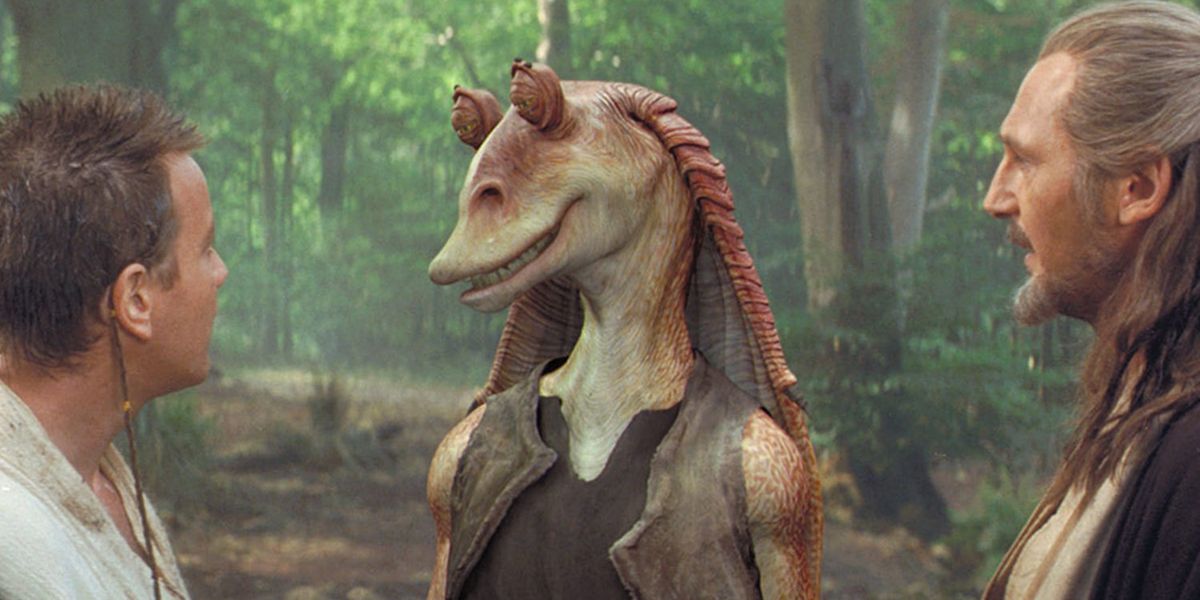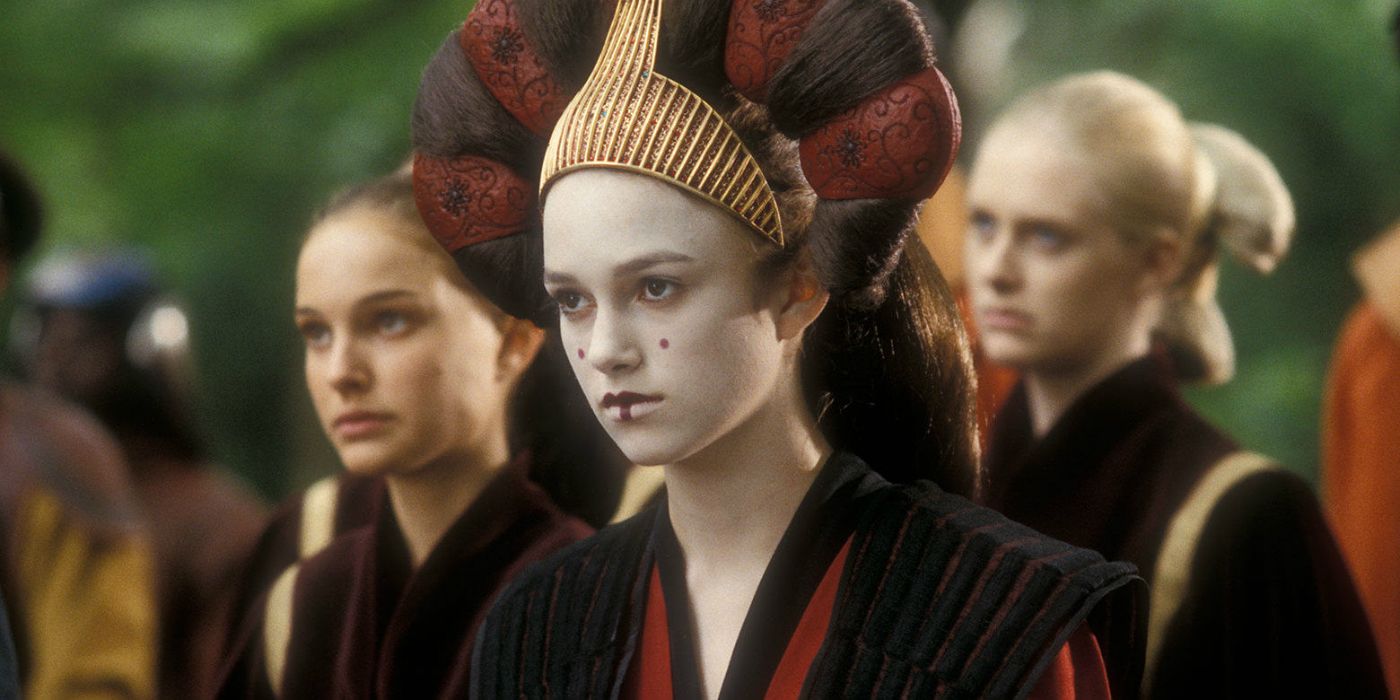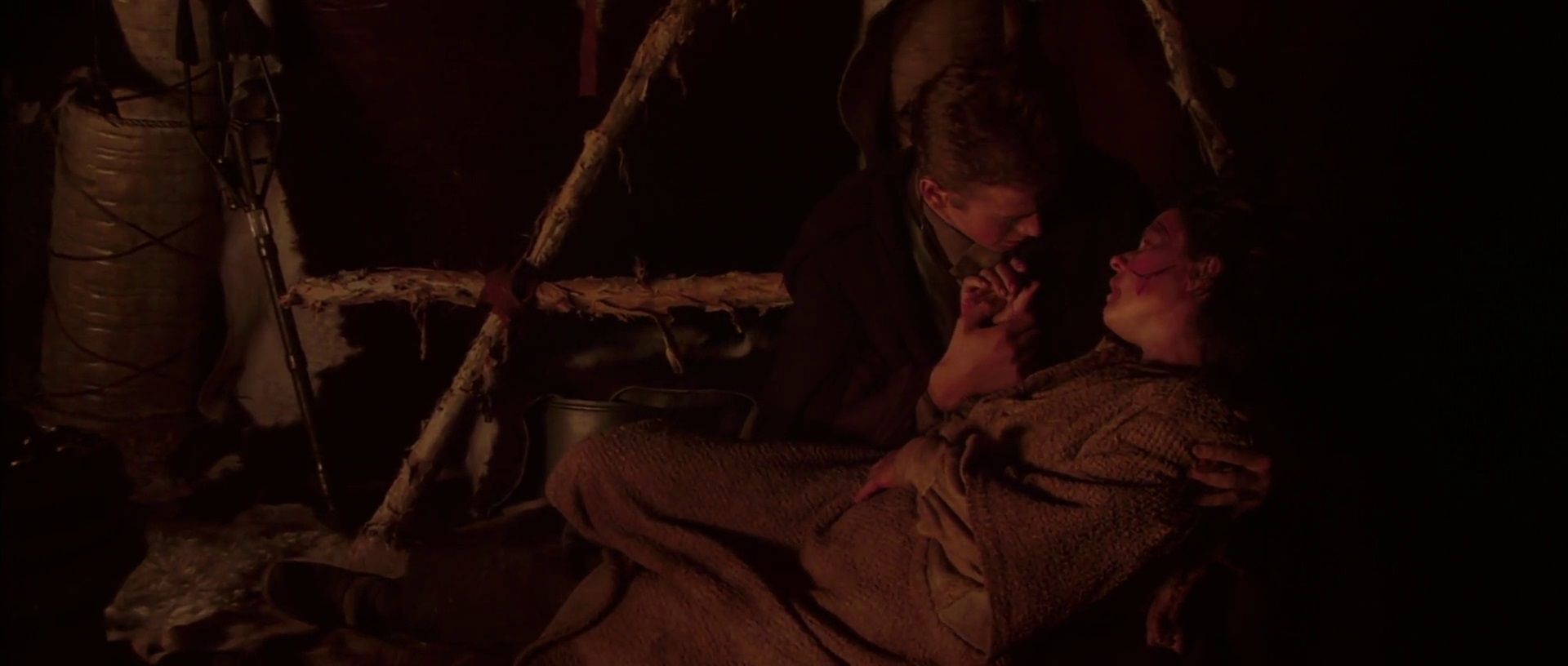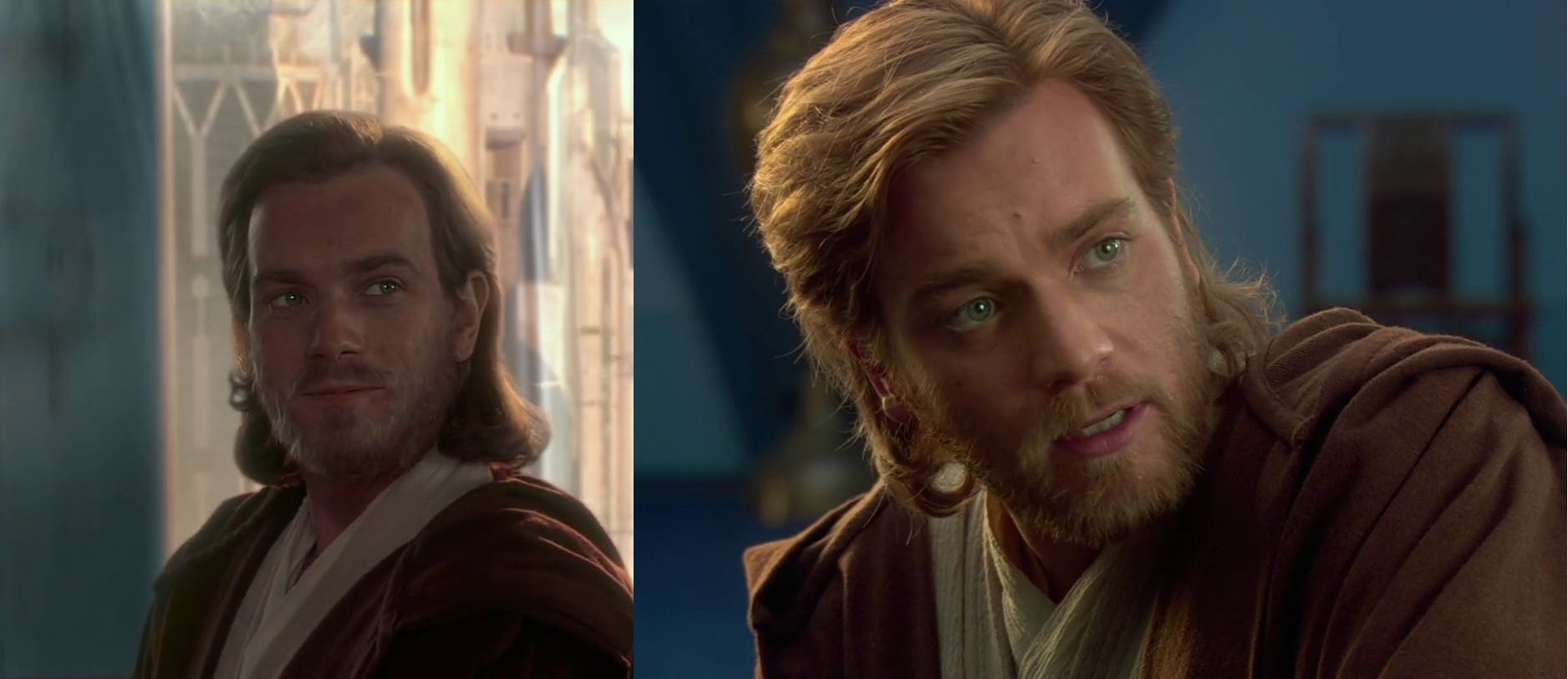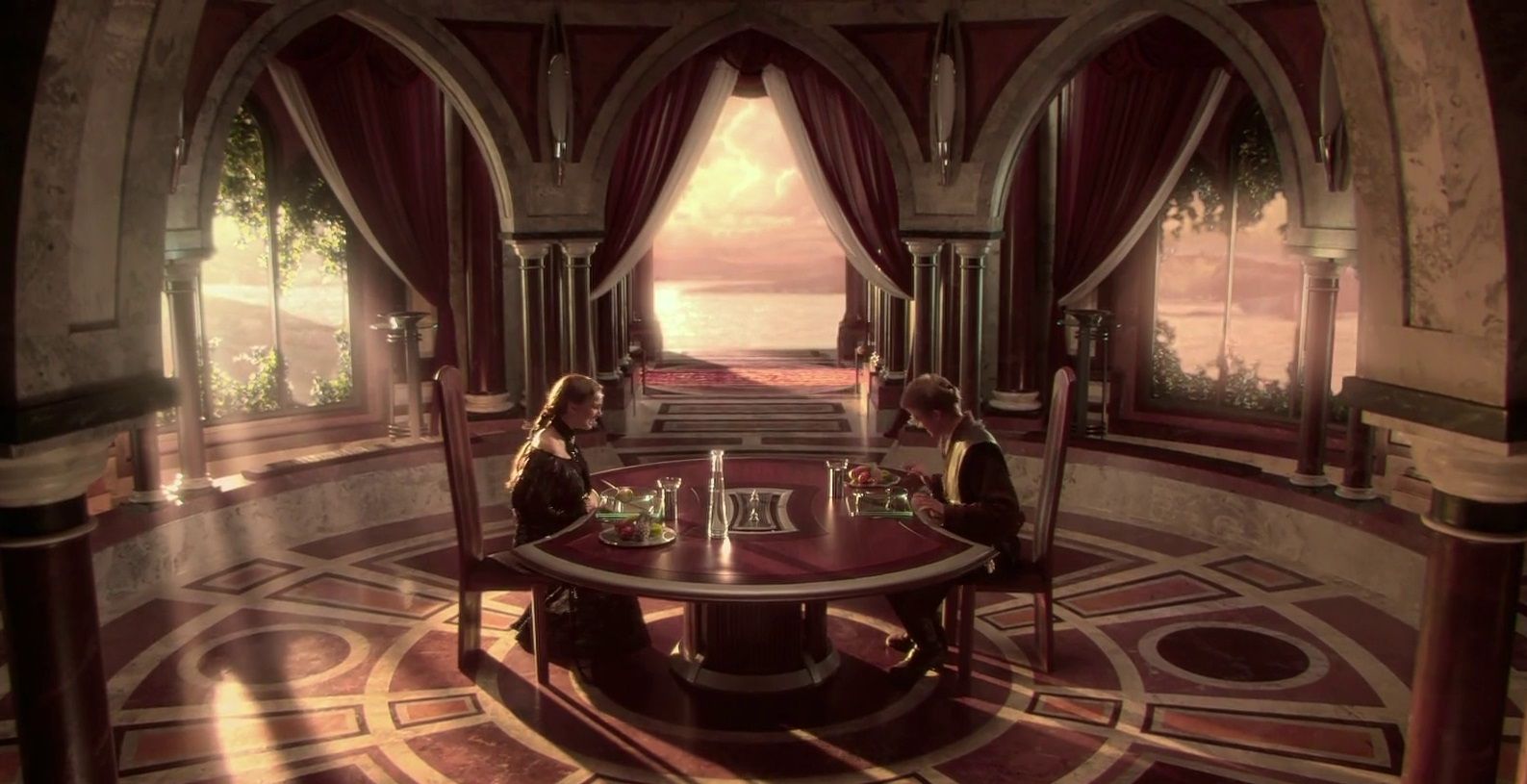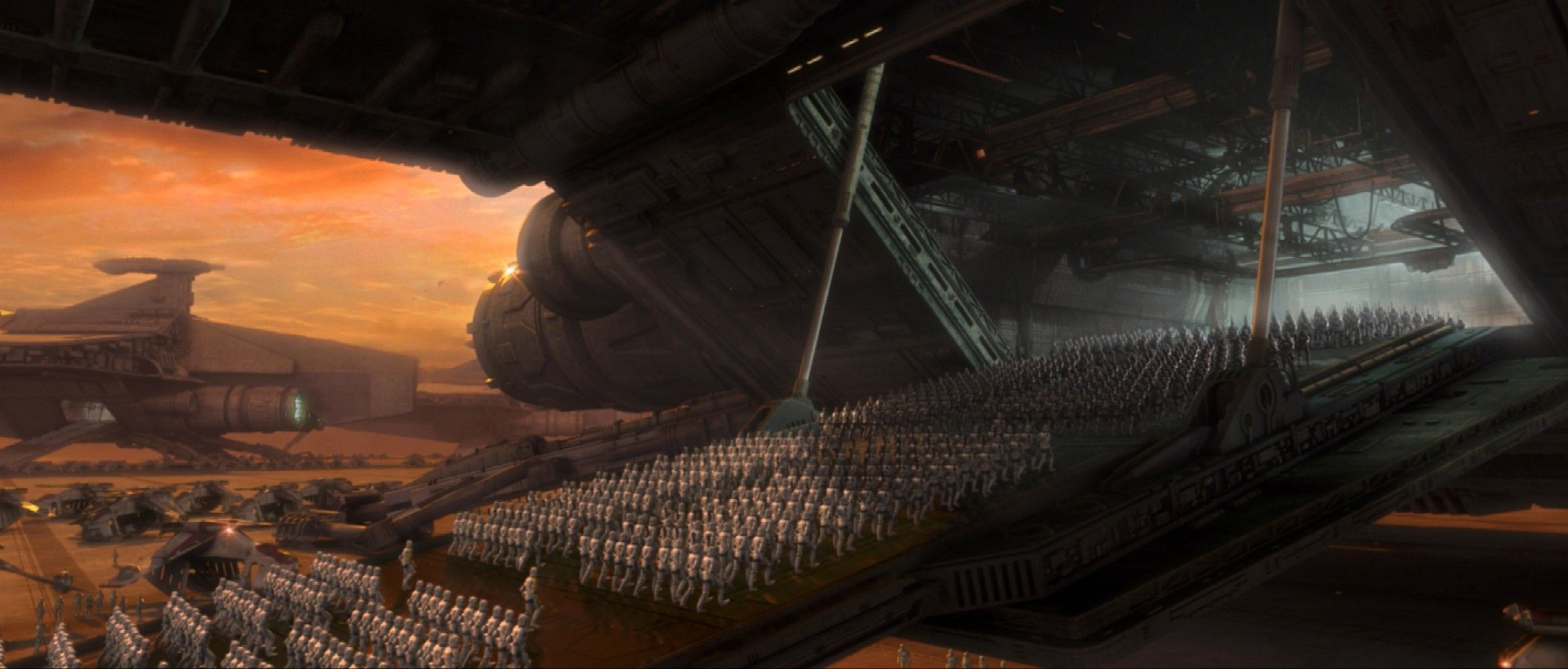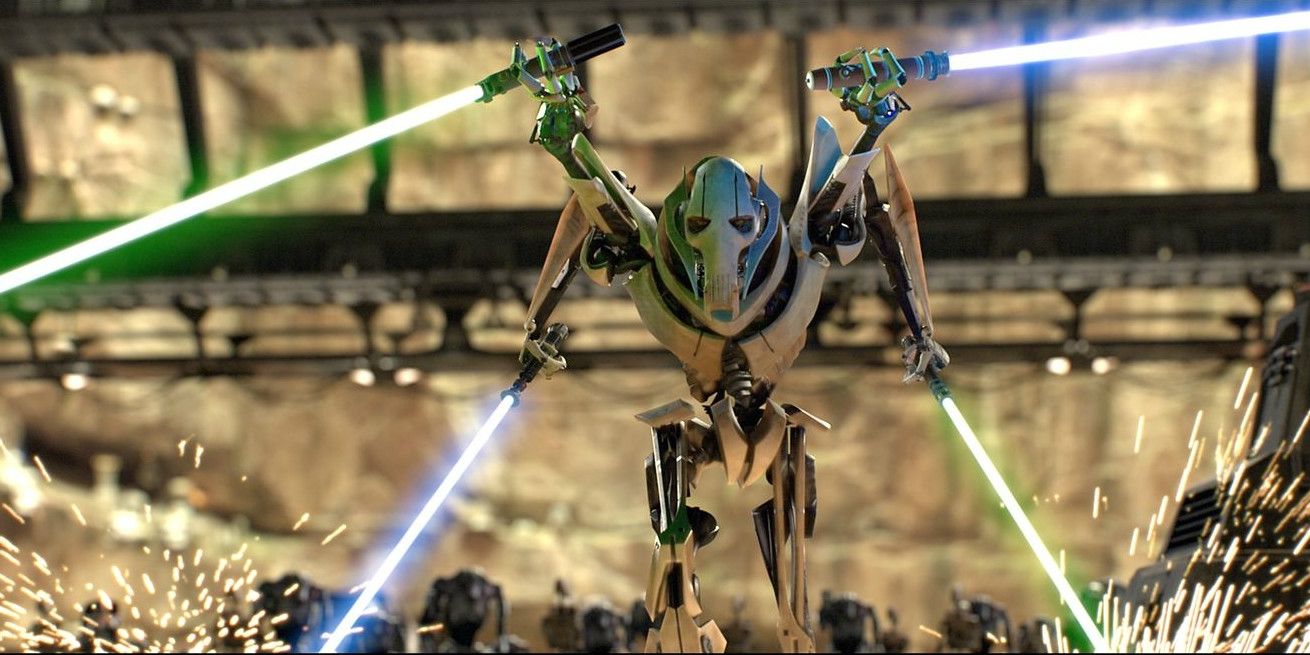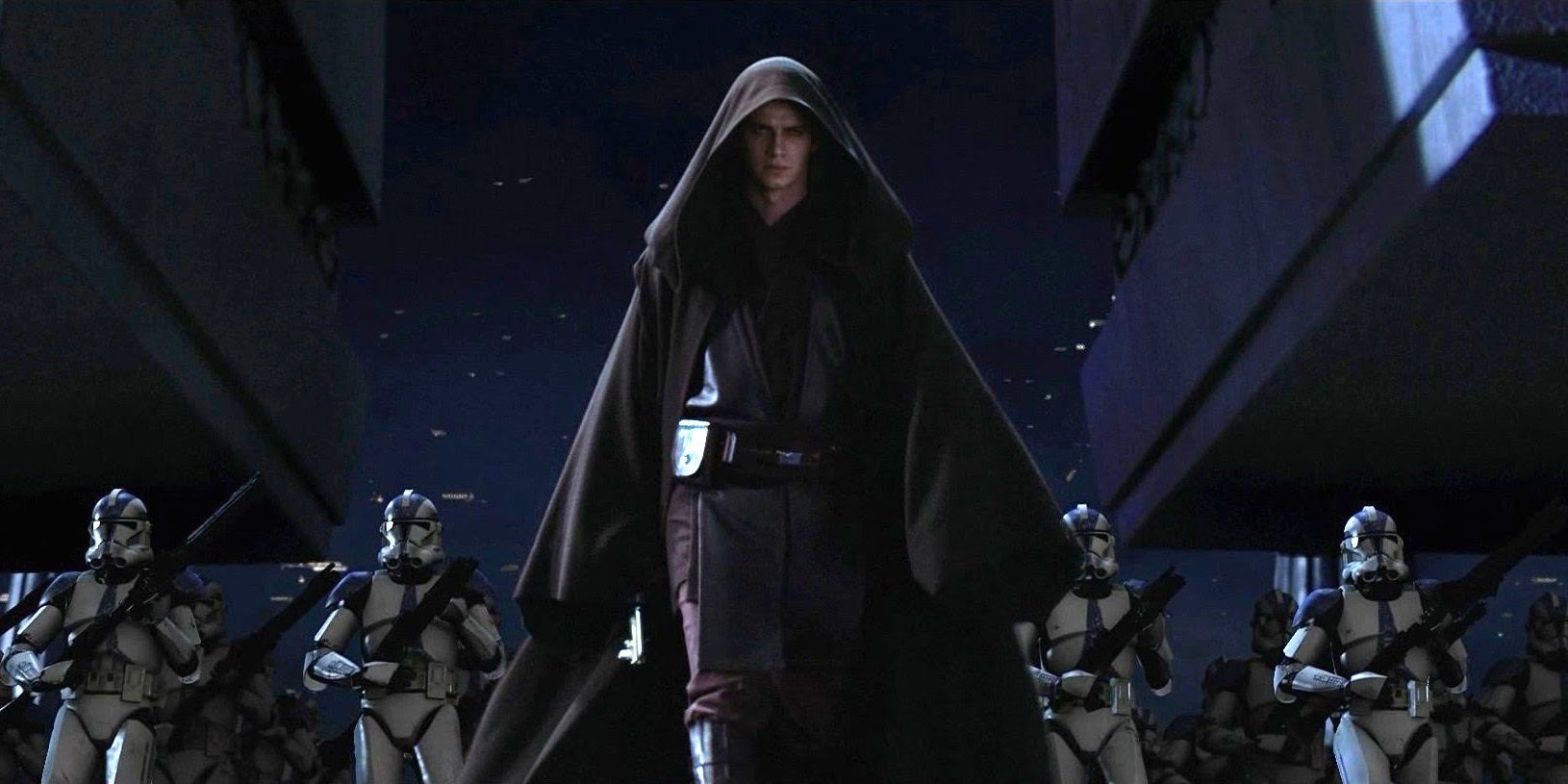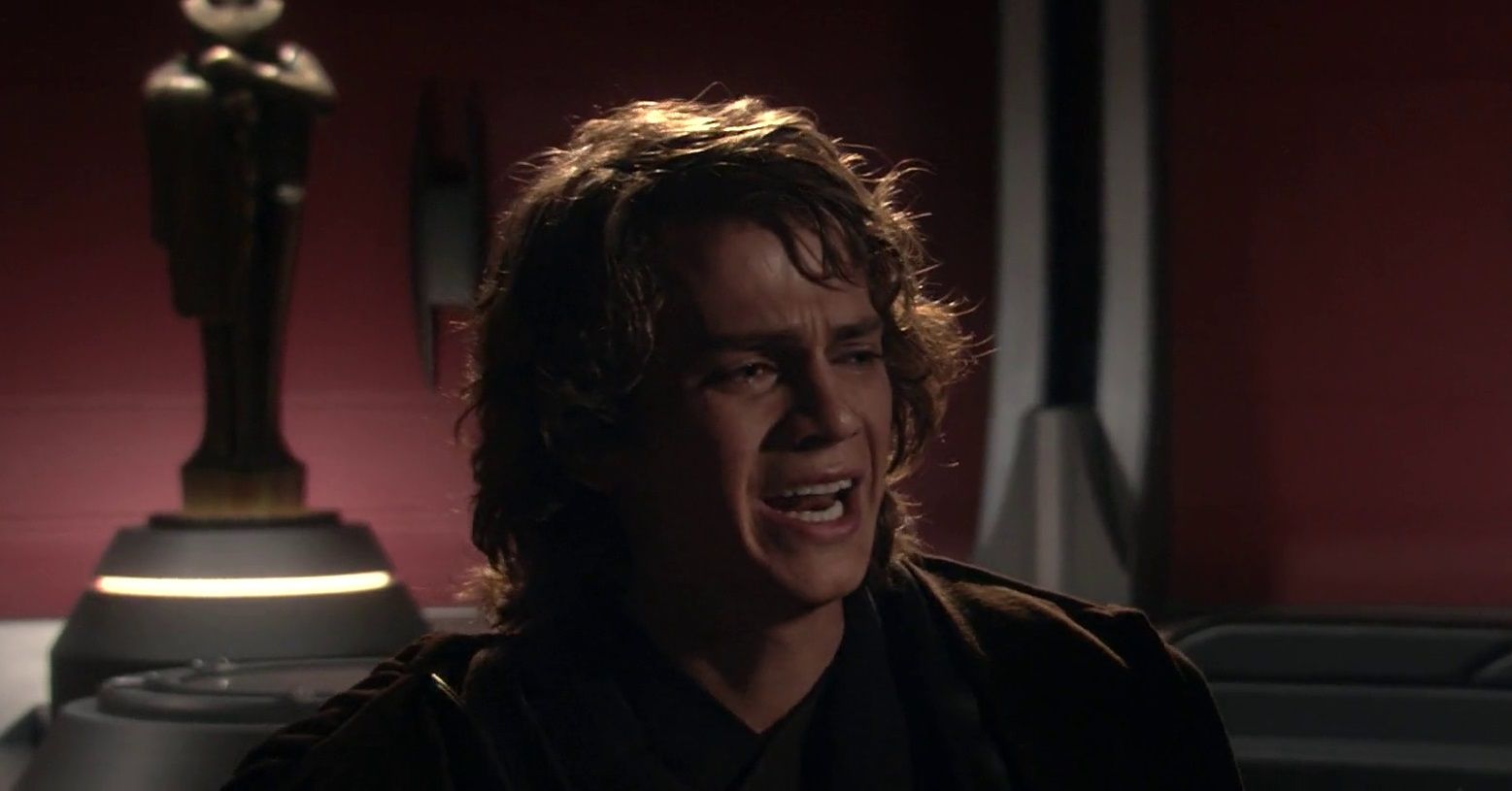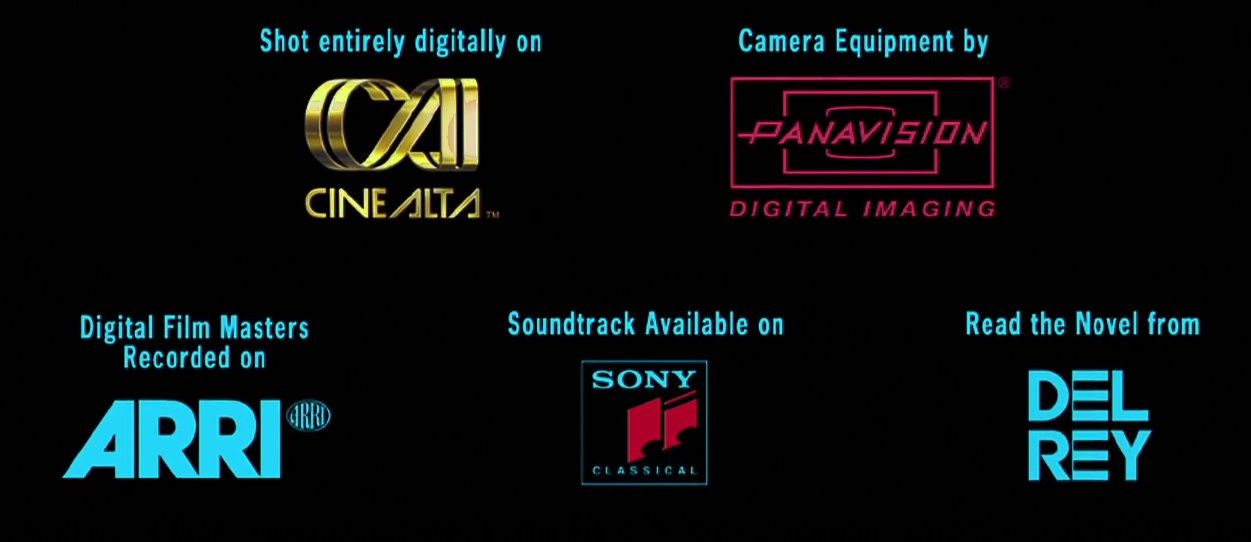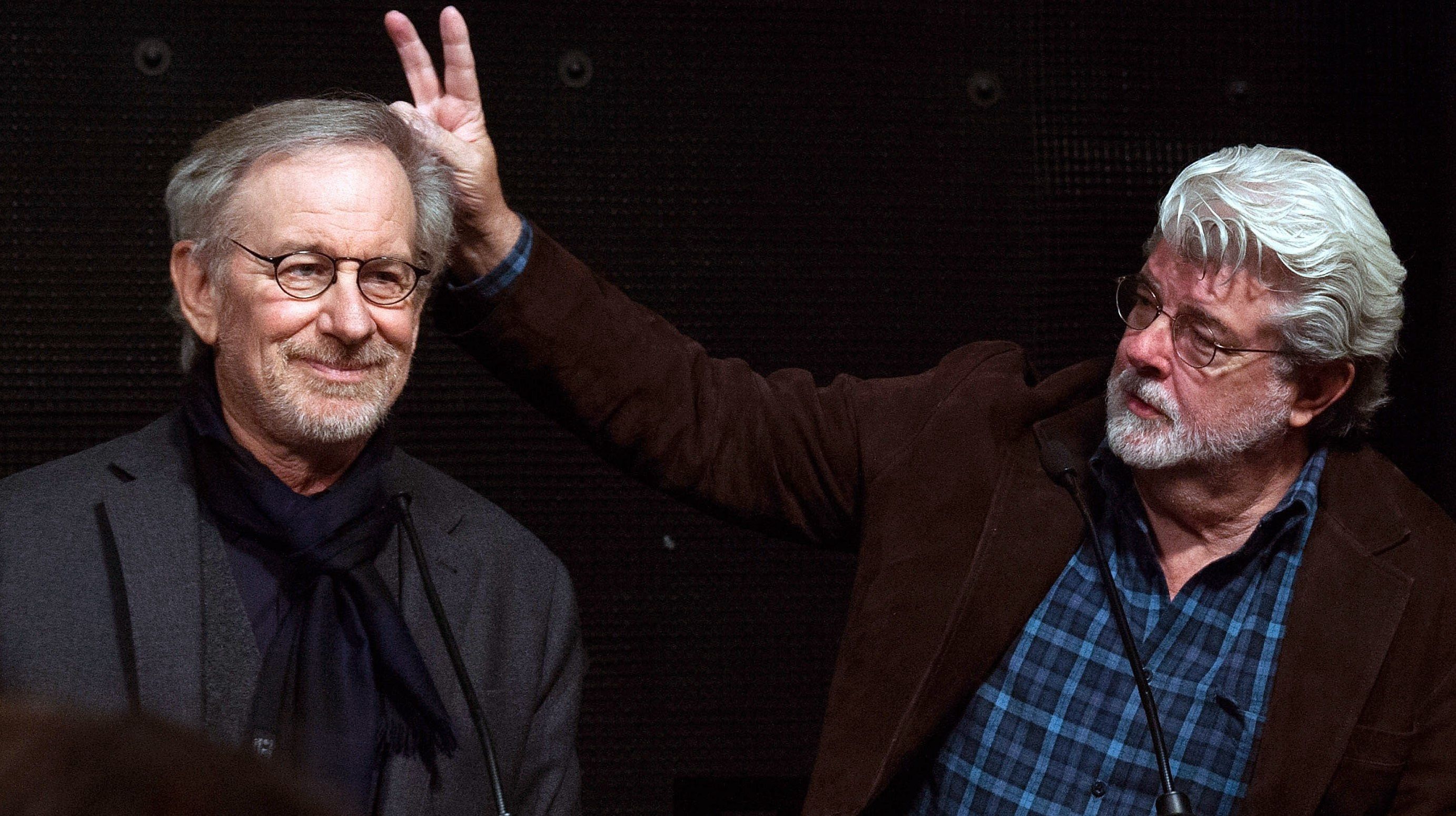It’s the 1990s, and a new Star Wars film is on the horizon. But hold on, it gets better: The original films are being rereleased and the new film will be part of a new trilogy, with George Lucas himself at the helm. Taco Bell and Pizza Hut market the new movie like crazy and the whole world is primed for what is easily the film of the decade: Star Wars: Episode I—The Phantom Menace.
Almost two decades after that first flick, the world has made a mockery of the Star Wars prequel trilogy, from outright hatred to light hearted jokes. The films have an extremely negative reputation among plenty of fans, though there’s also plenty that like the films all the same, with some even preferring the prequels to the originals. It would take the new sequel trilogy for the conversation to change a bit, but even then, some things never change.
Amassed on this list are several things you likely don’t know with regards to the sequel films. Some of the entries range from behind-the-scenes moments to things that happen within the movies themselves, either on-screen or off.
While it can’t compete with podracing (really, nothing can), we hope you’ll enjoy reading about 15 Mind-Blowing Things You Didn't Know About The Terrible Prequels.
People paid full price just to see the Phantom Menace trailer
There was a time when the only way to see a movie trailer was either on home video or at an actual movie theater. Even in today’s YouTube friendly world, that doesn’t sound too out of the ordinary, unless your movie is the most anticipated thing of the year.
It’s been said and reported that, during the first week of its release, the first trailer for The Phantom Menace brought in enough people who gladly paid full price for a movie just to see the trailer, then promptly leave afterwards. Apparently, up to seventy-five percent of movie goers that week at many theaters across the country paid full price just for the trailer.
In the year 1999, fans could be forgiven for going the extra mile to catch a first glimpse at a new Star Wars movie.
2Pac could have been in Phantom Menace
Anyone who knows a thing or two about 1990s hip-hip knows about Tupac “2Pac” Shakur. Other than being a well-loved and acclaimed rapper, he was also making a bit of a break as an actor, but his life was cut short in 1996.
Other than being a life-long Star Wars fan, it’s been said that Shakur was interested in a role for the then-upcoming Star Wars flick. What role this would have been isn’t known, but it’s been reported that it was Mace Windu (who would later be played by Samuel L. Jackson) - though at the time, this character hadn’t been revealed, let alone fully realized.
Even so, the idea of a famous celebrity like Tupac getting a role in Star Wars is fun to entertain.
Jake Lloyd quit acting after Phantom Menace
Playing inarguably the most important character in a new trilogy, Jake Lloyd did not have it easy. Before even getting into the post-release, the filmmakers had a young boy playing Anakin Skywalker, and how audiences - especially fans - would react to his performance would greatly affect the film’s success. Needless to say, the pressure was on, and it only got worse once the world saw the movie.
Lloyd says his childhood was ruined,due to people mocking him and his role in the film. A couple years later, he quit acting for good, even dismissing the series outright. However, in recent years, he’s come to accept his part in the series and has even gone to conventions and reprised the role of Anakin in other media.
Insane, unnecessary use of CGI
One of the things the prequels have been lambasted over is their blatant overuse of computer generated imagery. Those complaints aren’t without merit, as substantial parts of the film are comprised entirely of green-screen sets and/or CGI characters.
What may come as a real shocker is that even simple scenes of people talking contained CGI trickery. A scene containing Padme and Anakin, for example, can feature different takes from the actors, being morphed and spliced into the one scene seamlessly. This also goes for background affects and anything else that might look funny when multiple images are layered on top of one another.
It’s either an accomplishment by the filmmakers and visual effects artists, or yet another negative thing to hang on this film for its over-reliance on computer wizardry— or both.
Ahmed Best (Jar Jar) got burned by tea
Fans and detractors alike of The Phantom Menace seem to have strong opinions on one Jar Jar Binks, who might be the most controversial aspect of Episode I (as if nothing else in the film was already a major controversy).
Regardless, Ahmed Best, who played Jar Jar, seemed determined to make sure he didn’t screw up in anyway. While on a trip in England to get fitted into his Jar Jar suit, he suffered tea burns on his lap, which followed him all the way through the casting of his body. However, he didn’t say anything and endured the pain for the sake of not jeopardizing his role, and in turn, the movie. Whether he should have jeopardized the movie or not is another conversation entirely.
Phantom Menace was the first Star Wars movie that didn't win an Oscar
The Phantom Menace was indeed a first for the franchise in many respects. It was the first official prequel and the first film chronologically, among other milestones. While it was a major hit (being the highest-grossing film of that year and the second highest-grossing film ever at the time), it managed one other feat that is equal parts less impressive and disappointing: It was the first Star Wars film not to win an Oscar.
This is especially impressive considering the previous three films had won Academy Awards of some kind. While it may seem like an example of the film’s low quality, it makes more sense when you realize that it lost all three Oscar nominations to The Matrix, another high-profile 1999 film that was a major game changer.
Shmi Skywalker was kidnapped on Darth Sidious’s orders
There are plenty of moments in Anakin’s life that could be said to have contributed to his eventual change from Jedi to Sith. While helping Palpatine kill some Jedi definitely solidified it, there’s a key moment in Attack of the Clones that also showed just how emotion driven Anakin is, and that’s when he learned his mom had been kidnapped and killed by Tusken Raiders.
Anakin’s slaughtering of the Raiders is a pretty big deal, and it only inches him closer to that ever sinister and scary dark side. What’s even scarier is that the kidnapping and killing of Anakin’s mother may have been set up by one Count Dooku on the orders of one Darth Sidius. That would mean Palpatine orchestrated Anakin’s mother’s death as a way to instill that growing anger and emotional fragility within him.
Ewan McGregor used a hairpiece and prosthetic beard in Attack of the Clones
It can be quite problematic when an actor finishes production on one film, begins work on another, then has to go back to working on the previous film post-production. While reshoots and pick-up shots aren’t anything out of the ordinary, what can make them problematic is when one of the lead actors has changed their appearance since regular production first wrapped.
Something that likely went unnoticed by many were slight changes to Obi-Wan’s hair and beard. Ewan McGregor had shaved most of his hair and all of his beard for Black Hawk Down, so when it was time for post-production Star Wars work, he had to wear a hairpiece and prosthetic facial hair, for his natural hair hadn’t grown back in time. Thankfully it only appears in certain scenes, and blends well enough with how McGregor’s hair naturally looks.
Anakin and Padme scenes ad-libbed in Attack of the Clones
Among the many things people knock the prequels on is its dialogue, which ranges from cringe-inducing to downright meme-worthy. So it may be surprising to hear that there at least exists one section in the film where Mr. George Lucas himself asked the actors to ad-lib their lines, rather than go with what was in the script.
This scene isn’t very long in the final cut, but it’s nice all the same. It’s what’s known as the “aggressive negotiations” conversation, which takes place during Anakin and Padme’s dinner (where he lifts a CGI pear). Here Anakin explains what aggressive negotiations are (regular negotiations, but with lightsabers), and the two laugh at his response. It even gets a call-back later in the film during the battle on Geonosis.
Every single clone trooper is CGI
Would it surprise anyone to know that Attack of the Clones has scenes comprising entirely of CGI? Of course not. The prequels gave George Lucas free reign to use the current technology as expertly and as recklessly as he wanted. While this did often result in human beings walking through what are clearly non-existent sets, it could also be used effectively, such as when an army of robots was needed or a space battle was being depicted.
Speaking of armies, the clone troopers seen in Episode II are one-hundred percent CGI, and it’s said not a single full trooper suit was ever built. Motion capture was performed by Industrial Light and Magic employees, occasionally wearing just a helmet and/or footwear. Other than that, they’re computer generated to the bone.
General Grievous and his backstory changes
Unless you watched the limited Clone Wars cartoon, or did some research, you likely entered Revenge of the Sith never having heard of General Grievous before. In the aforementioned cartoon, he gets his lungs messed up when Mace Windu uses a Force-grip on him. This, then, explains his exposed gut-sack in the film, along with his coughing.
However, the later Clone Wars CGI show seems to say that Grievous has always had a bad cough. Additionally, since Grievous was trained in the Jedi arts (read: he can wield lightsabers), it was said that, when he was created he was given the blood of a Jedi with a high midi-chlorian count. Once Disney got the film rights, this was scrapped, since it’s now said anyone is able to learn the ways of the lightsaber with enough time and effort.
Changes to Anakin’s character during post-production of Revenge of the Sith
Episode III is the film where Anakin finally lets his hair down, sports a scowl, and becomes Darth Vader. His motivations are various, but his primary reason has to do with wanting to save his love Padme. He fears she will die and he wants to do all that he can to keep her safe. Of course, we all know how that turns out…
During post-production, Lucas kept rewriting the character and further focusing in on his motivations, but by this point, filming had been done. So, through the magic of editing, as well as pick-up shots, Lucas was able to make Anakin’s primary motivation be Padme, instead of a variety of things with equal concern. Just another reminder of how much a movie can be altered in the editing room.
Revenge of the Sith didn't even get an Oscar nomination for VFX
Whereas The Phantom Menace didn’t win an Academy Award, Revenge of the Sith almost didn’t get nominated for any.
Being the best reviewed, and arguably most popular and well-liked, among the prequels, it’s a bit of a surprise how little awards recognition Episode III received from the Academy (though it did win the Saturn Award for Best Science Fiction Film). While one would expect it to get a visual effects nom, it didn’t even get that, only being able to get one nomination: Best Makeup, and it didn’t even win that (Chronicles of Narnia did).
On the bright side, it’s the only film in the prequel series not to receive a Razzie nomination for Worst Picture, and Hayden Christensen won Best Villain at the MTV Movie Awards.
Attack of the Clones is the first major motion picture ever shot and distributed on digital video
In the second decade of the 21st century, the idea of a movie being shot and released on digital video is not a big deal. By the mid-2010s, virtually all movie theaters exclusively started projecting movies digitally, aside from a few specialty theaters and events.
Attack of the Clones (which came out in 2002) was the first major motion picture shot entirely on digital video, with a 24-frame HD Progressive Scan camera, developed by Sony and Panavision. While not every venue was able to show it digitally, there were a few, and it stands as one of the very first digitally made and projected movies. However, no film of its scale or hype had ever been shot completely digital, so while many saw it on 35mm film in theaters, those who saw it digitally at that time were witnessing a new standard in the making.
Steven Spielberg helped design sequences during EP3’s pre-production
George Lucas wore a lot of hats during the making of the prequel films. He was director, writer, producer, financier—he was the primary driving force and the reason these prequel films exist. Even so, even he couldn’t do it all, and apparently, he got a little help from his friends.
Specifically, he got help from the one and only Steven Spielberg. Spielberg wanted the chance to test out ILM’s new pre-visualizations techniques (which he wanted to use for his up-coming War of the Worlds remake) and Lucas allowed him to do so by helping with designs for Episode III.
It’s said Spielberg’s main contribution as designer was the world famous climactic lightsaber duel between Obi-Wan and Darth Vader, which stands as one of the biggest moments in the prequel trilogy, if not the biggest.
---
Do you have any Star Wars prequel trilogy trivia to share? Leave it in the comments!

